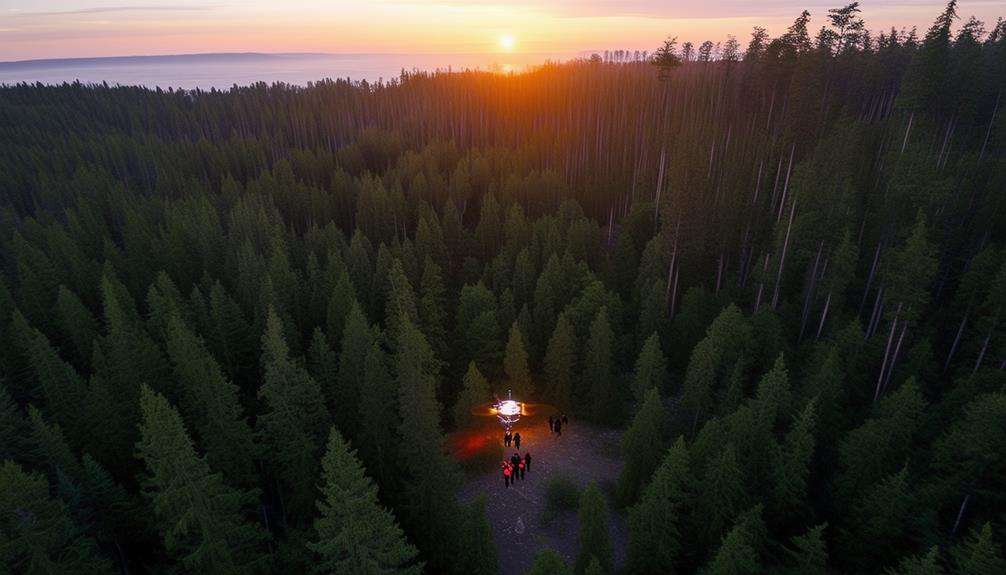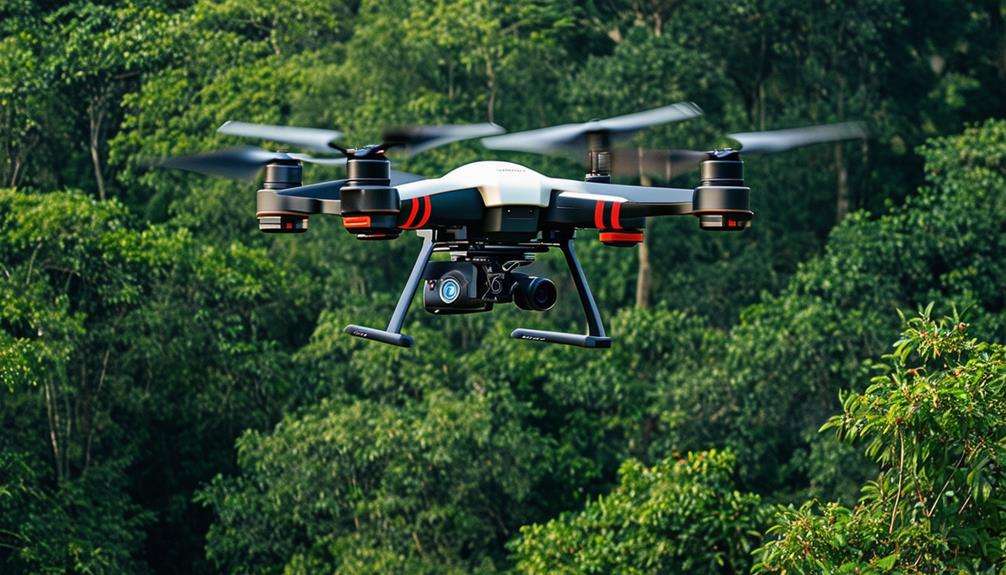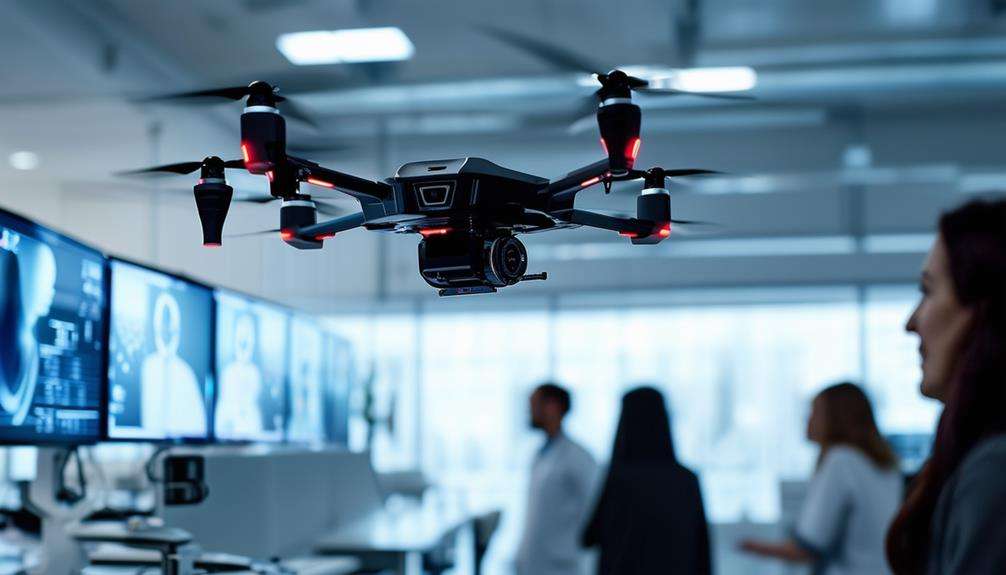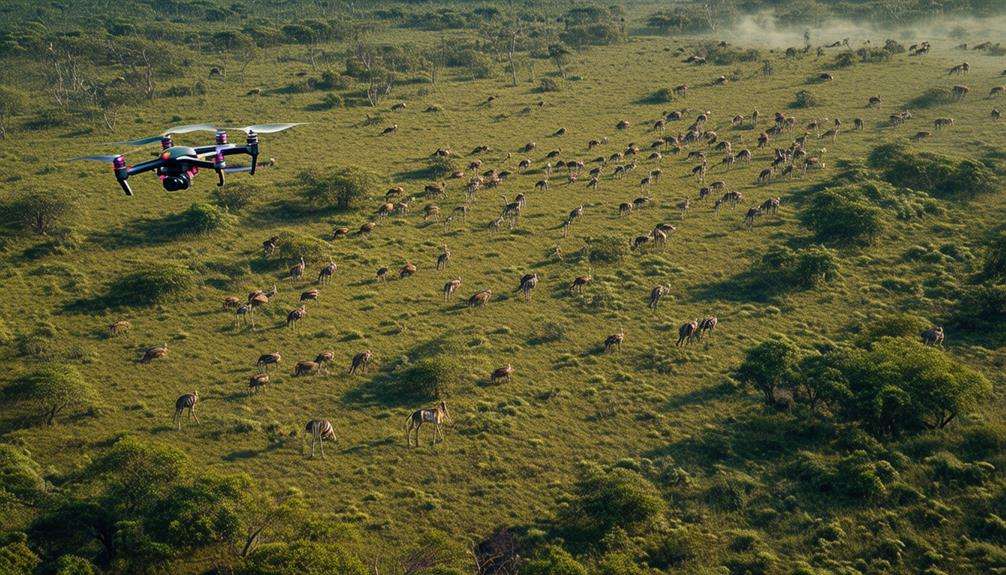10 Fascinating Facts About Drones You Probably Didn’t Know
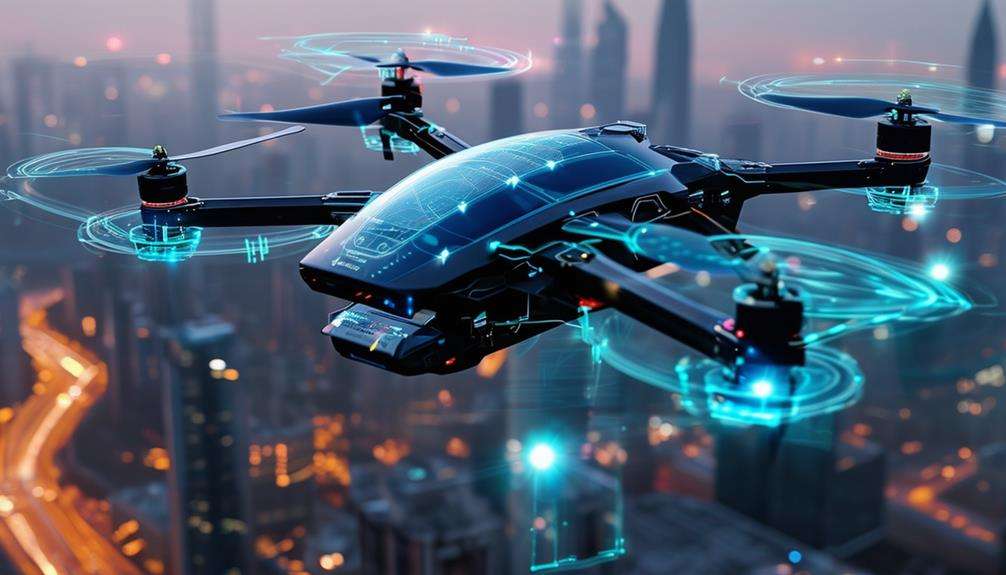
You might think you know all there is about drones, but some intriguing aspects often fly under the radar. For instance, did you know that Australia's 2002 drone legislation was pioneering and set a global precedent?
Or that the initial concepts of drones can be traced back to the 19th century with innovators like Nikola Tesla? These are just the tip of the iceberg. From Hollywood's unexpected contributions to drone technology to Google's ambitious drone delivery projects, there's much more to uncover. Curious about how these aerial marvels have evolved? Let's explore the lesser-known milestones and surprising facts behind drone technology.
Early Drone Legislation
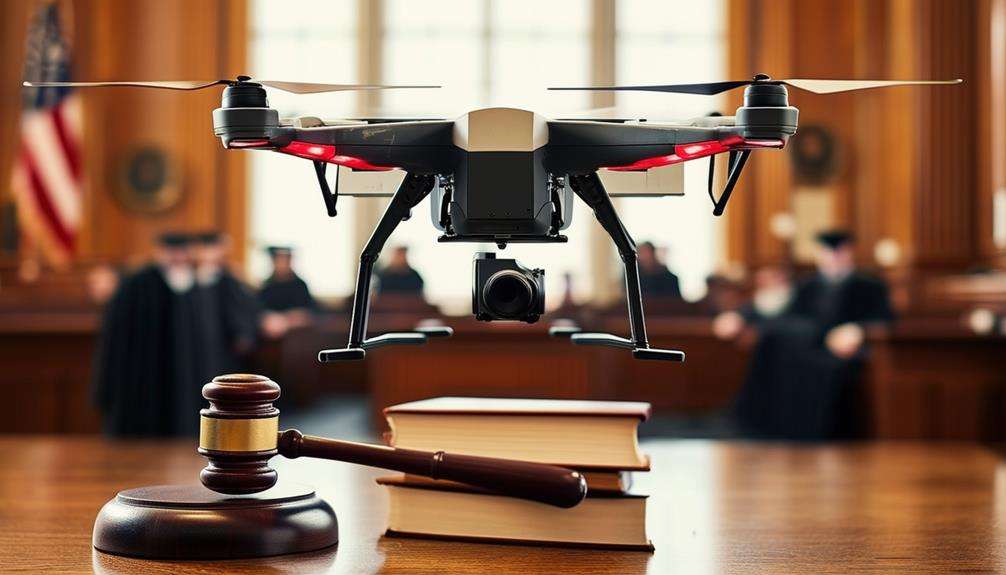
In 2002, Australia became a global leader in UAV (Unmanned Aerial Vehicle) regulations by introducing pioneering legislation through CASA (Civil Aviation Safety Authority). Unlike the predominantly military-focused drone development in many other countries, Australia's legislation covered civilian uses, facilitating commercial and recreational advancements.
Australian corporations quickly capitalized on these new laws, using drones for tasks such as pipeline inspections, agricultural monitoring, and security. This proactive approach ensured safety and spurred innovation across various industries.
While many nations were still focusing on military applications, Australia's comprehensive legislation allowed for a wider range of uses. This foresight positioned the country as a pioneer, setting a benchmark for others to follow.
The early regulations balanced safety concerns with the potential of civilian drone technology. Australia's approach underscored the importance of regulatory frameworks in harnessing new technologies while mitigating risks. By emphasizing civilian applications and creating a structured environment for drone use, Australia paved the way for the diverse and dynamic drone industry we see today.
19th Century Beginnings
While drones might seem like a modern invention, their origins trace back to the early 20th century. Early concepts included military balloons and pilotless torpedoes, with visionaries such as Nikola Tesla even imagining uncrewed aerial combat vehicles. These early innovations laid the foundation for the advanced drones we see today.
Early Drone Concepts
Fascinated by the potential of unmanned flight, innovators in the early 20th century laid the groundwork for modern drone technology. This exploration began with the development of pilotless torpedoes by the Dayton-Wright Airplane Company, marking an early milestone. These initial attempts at drone technology reflected the growing interest in unmanned aircraft.
In 1915, Nikola Tesla wrote about uncrewed aerial combat vehicles, demonstrating a visionary approach to drone concepts well ahead of his time. Although his ideas weren't immediately realized, they significantly influenced the subsequent evolution of drones. By 1917, the US military had developed the Kettering Bug, an early drone designed for use in World War I. This prototype unmanned aerial vehicle (UAV) could carry explosives to a target.
These early innovations were primarily driven by military needs but set the stage for the diverse applications we see today. From military use, drone technology has expanded into civilian and commercial spheres, showcasing its adaptability and wide-reaching potential. Understanding these early concepts highlights the remarkable evolution of drone technology, from simple pilotless aircraft to sophisticated tools used across various industries.
Military Balloon Experiments
Early 20th-century military innovations built upon 19th-century balloon reconnaissance missions, marking the true beginnings of drone technology. These early experiments were pivotal, laying the groundwork for the future of unmanned aerial vehicles (UAVs).
The concept was straightforward: use balloons to gather intelligence without risking human lives. This idea captivated military strategists and engineers, leading to more sophisticated developments.
By 1917, the US military had developed the Kettering Bug, an early form of an unmanned aircraft. The Kettering Bug was essentially a flying bomb designed to deliver explosives to enemy targets without a pilot. This represented a significant leap from balloon-based reconnaissance to a more active combat role for drones, marking the shift from passive surveillance to active participation in warfare.
Throughout the early 20th century, the US military continued to refine and develop drone technology, recognizing its potential to revolutionize warfare. These advancements paved the way for the sophisticated robotic warfare systems we see today. While drones may seem like a modern invention, their roots in military applications date back over a century, showcasing the enduring value of unmanned technology.
Pioneers and Innovators
How did the visionaries and trailblazers of the early 20th century revolutionize drone technology, setting the stage for modern advancements? Early pioneers like A. M. Low and companies such as the Dayton-Wright Airplane Company were instrumental in shaping the future of unmanned aerial vehicles (UAVs). In 1916, A. M. Low's creation of the Aerial Target marked one of the first powered UAV attempts, laying the groundwork for future innovations.
Israel became a pioneering country in drone development, thanks to the efforts of Israel Aerospace Industries. This achievement demonstrated the potential of UAVs to the world. Meanwhile, the Dayton-Wright Airplane Company developed pilotless torpedoes, significantly contributing to early drone technology exploration.
| Visionary/Innovator | Contribution |
|---|---|
| A. M. Low | Created the Aerial Target in 1916 |
| Dayton-Wright Airplane Company | Developed pilotless torpedoes |
| Israel Aerospace Industries | Pioneered drone development in Israel |
| US Military | Led advancements in robotic warfare and drones |
| Civilian Sectors (e.g., Farmers) | Utilized drones for agricultural applications |
| Event Industry (e.g., Wedding Planners) | Employed drones for event photography and videography |
These early developments have evolved from military origins to revolutionize civilian sectors, including agriculture and event planning. The groundwork laid by these early 20th-century pioneers continues to influence modern drone technology.
Hollywood's Drone Pioneer
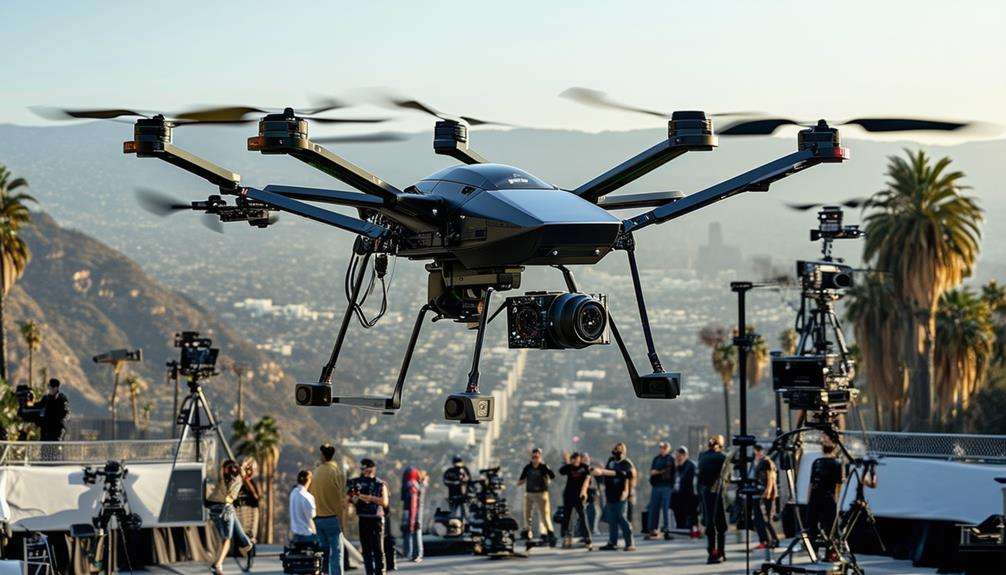
Reginald Denny, a Hollywood actor and World War I pilot, revolutionized aviation by developing the pioneering civilian drone, the Radioplane, in 1935. His creation wasn't just a toy; it marked a significant advancement in aviation technology. Powered by the groundbreaking Dennymite Engine, Denny's Radioplane model brought model aviation to the masses, captivating both hobbyists and professionals.
Interestingly, Denny's Radioplane also found its way into the military sector. The US military adopted the Radioplane for target practice, making it one of the earliest military applications of drone technology. This early use demonstrated the potential of drones beyond civilian entertainment, introducing practical, defense-oriented roles.
Denny's ingenuity extended beyond creating an entertaining gadget. His drone design laid the groundwork for the diverse applications we see in modern drone technology today. From aerial photography and delivery services to agricultural monitoring, these advancements owe a nod to Denny's early innovations.
His contribution underscores the fascinating intersection of entertainment, aviation, and technological innovation that continues to shape our world. So next time you see a drone, remember it all started with a Hollywood actor's vision.
First US Drone Permit
The FAA issued the first commercial drone permit in the US in 2006, marking a pivotal moment for drone technology. This milestone initiated commercial drone operations, transforming how businesses could utilize aerial capabilities.
FAA Authorization Milestone
In 2006, the FAA issued the first commercial drone permit in the United States, marking a pivotal moment in the regulation of unmanned aerial systems. This regulatory breakthrough allowed corporations to use drones for various commercial purposes, such as pipeline inspections and security monitoring. Prior to this, drones were primarily utilized by government agencies for tasks like disaster relief and border surveillance. The issuance of this initial commercial permit signaled the start of a new era in drone technology.
Industries quickly recognized the potential of these devices following the FAA's approval. The introduction of commercial permits enabled drones to shift from primarily military and governmental applications to mainstream commercial uses. This 2006 milestone paved the way for rapid growth and integration of drones into diverse sectors.
Interestingly, the US lagged behind Australia by four years in issuing commercial drone permits. Despite this delay, the 2006 milestone set the stage for the innovation and expansion that defines the drone industry today.
Commercial Drone Breakthrough
Corporations capitalized on the initial commercial drone permit issued by the FAA in 2006, transforming industries' approaches to tasks such as inspections and security. This pivotal decision signified a major breakthrough in drone technology, expanding their use from military to civilian applications. Prior to this, government agencies had already utilized drones for disaster relief and border surveillance, laying the groundwork for widespread commercial adoption.
With the permit in place, companies explored innovative applications for drones, leading to their integration across various sectors. Although the US lagged behind Australia by four years in granting commercial drone permits, American corporations rapidly adopted drones for pipeline inspections, security operations, and more. This swift uptake highlighted the critical role drones would play in enhancing efficiency and safety across multiple industries.
The FAA's 2006 decision not only opened new opportunities for businesses but also marked the beginning of a new era where drones would become essential tools in the commercial landscape. Over a century of military drone technology set the stage for this dramatic shift to commercial use, underscoring the transformative impact of drones on modern industry.
Pioneering Airspace Regulations
The issuance of the inaugural commercial drone permit by the FAA in 2006 marked a pivotal moment in the development of airspace regulations. Before this, drones were predominantly used for military purposes, with a history spanning over 150 years. The permit signified a shift towards acknowledging the commercial potential of drones for applications such as pipeline inspections and security operations.
Interestingly, Australia was a forerunner in this arena, having established UAV regulations as early as 2002. Nonetheless, the FAA's approval in 2006 quickly enabled various industries in the U.S. to explore and implement drone technology effectively. Prior to commercial permits, government agencies had already been employing drones for disaster relief and border surveillance, setting the groundwork for broader applications.
Aerial targets, once used solely for military training, became crucial in these new commercial ventures. This transition demonstrated how technology initially designed for warfare could be adapted for peaceful and productive purposes. The FAA's 2006 decision not only allowed corporations to explore innovative uses for drones but also laid the foundation for future regulations that would shape the burgeoning drone industry.
Commercial Drone Sectors
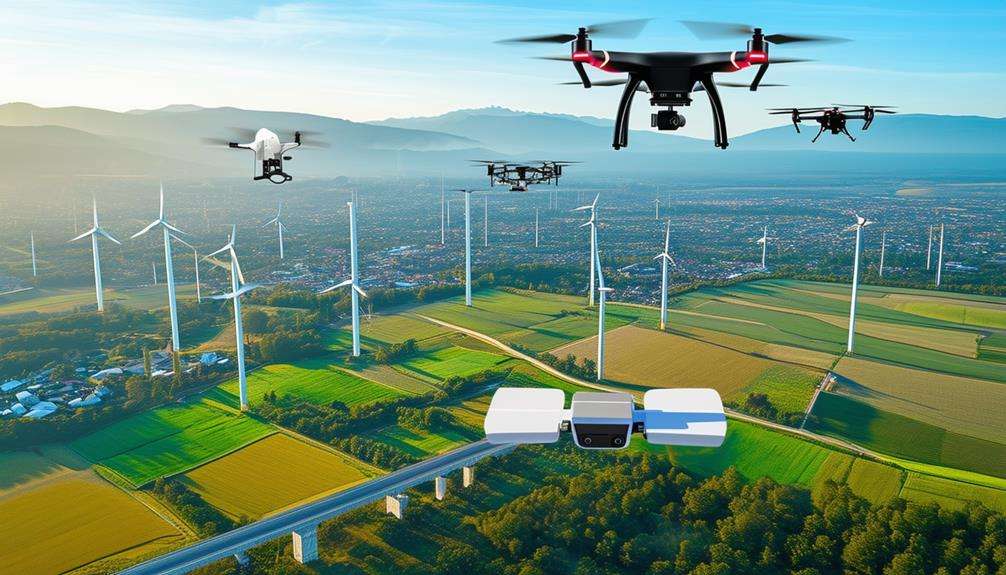
Drones have revolutionized various commercial sectors in Australia, including real estate, mining, marketing, and environmental surveying. These devices capture stunning aerial footage for property showcases and conduct efficient aerial surveys for mining operations. Far from being mere tech gadgets, drones are invaluable tools across diverse industries.
In journalism and security, drones provide aerial perspectives previously unattainable, proving crucial in shipping and rescue operations by delivering goods and aiding in emergencies. Scientific research in extreme climates also benefits significantly, as drones grant access to hard-to-reach areas.
Agriculture has seen notable improvements through drones that monitor crops and livestock, enhancing productivity and sustainability. In construction, drones facilitate site inspections and track project progress, ensuring timelines are met. Aeromedical services, such as those provided by Melbourne-based Swoop Aero in partnership with UNICEF, use drones for life-saving deliveries to remote areas.
Lifeguards and community services also find drones indispensable, enhancing safety and operational efficiency. With companies like Google launching drone-based food delivery services and CASA introducing the 'flyer's license', the commercial drone sector in Australia is poised for continued growth.
Advanced 3D Mapping
CSIRO's advanced Hovermap technology has revolutionized 3D mapping with drones, offering unprecedented precision and reliability. This innovative technology empowers autonomous aerial vehicles to generate highly accurate 3D maps, crucial for various real-world applications across multiple industries, including agriculture, construction, and environmental monitoring.
Hovermap technology not only enhances mapping accuracy but also significantly improves safety and reliability. By focusing on automation for larger drones, CSIRO ensures these drones can navigate shared airspace safely and efficiently, reducing the need for human intervention and minimizing associated risks.
These versatile drones excel in challenging environments, delivering detailed 3D maps that are indispensable for numerous sectors. In agriculture, they facilitate the mapping of crop fields to optimize yield. In construction, they provide precise site surveys, and in environmental monitoring, they aid in tracking ecosystem changes.
Google Drone Deliveries
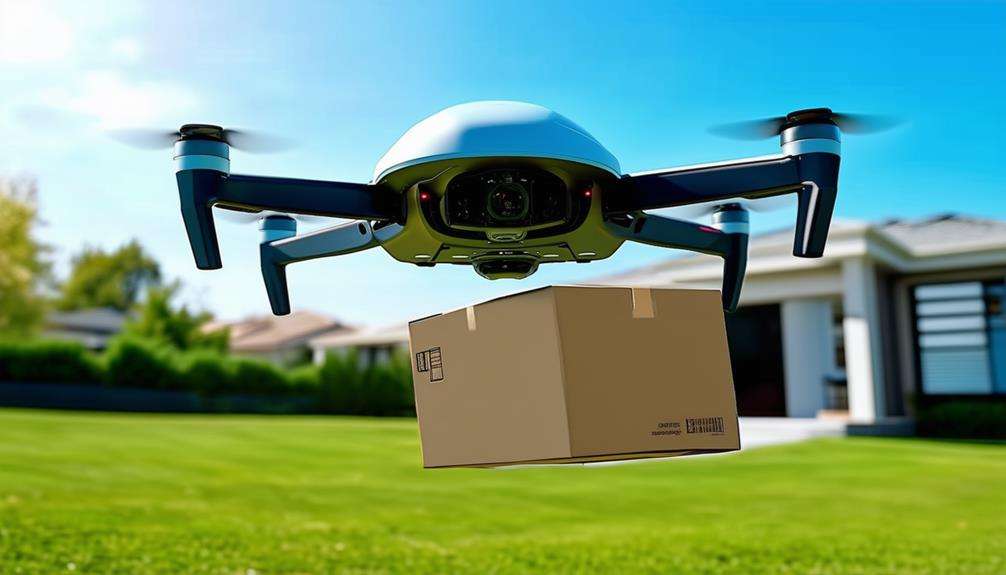
Alphabet, Google's parent company, has revolutionized food delivery by launching drone services in Canberra, Australia. Utilizing cutting-edge unmanned aerial vehicles (UAVs), this initiative aims to deliver meals faster and more efficiently. These drones adeptly navigate urban landscapes, ensuring that food arrives fresh and hot.
To legally operate these UAVs in Australia, drone operators must possess a 'flyer's license' as mandated by the Civil Aviation Safety Authority (CASA) since 2019. This regulatory framework is crucial for maintaining safe and responsible drone operations, thereby supporting the viability of commercial drone delivery services.
Below are some essential details:
| Aspect | Details | Cost |
|---|---|---|
| Service Launch | Canberra, Australia | N/A |
| UAV Operator Requirement | Flyer's License | N/A |
| Recreational Drone Registration | Mandatory | $20 annually |
| Commercial Drone Registration | Mandatory | $150 |
Google's drone delivery services signify a major advancement in the commercial use of drone technology. As UAVs continue to develop, these aerial couriers are likely to become a common sight not only in Australia but also worldwide. This technological shift has the potential to transform the logistics industry by reducing delivery times and costs while improving customer satisfaction.
Remote Drone Operations
Remote drone operations leverage advanced technology to enable pilots to control UAVs from considerable distances, facilitating the execution of complex tasks with enhanced ease and safety. By integrating sensors, cameras, and sophisticated communication systems, these unmanned aircraft can be operated from remote locations. This capability revolutionizes various industries by offering efficient and secure solutions for numerous applications.
Envision conducting aerial photography, surveillance, or search and rescue missions without leaving your command center. Remote drone operations make this possible, providing unparalleled accessibility, especially in hard-to-reach or hazardous environments. Whether capturing breathtaking aerial images or monitoring a construction site, the technology ensures tasks are completed effectively.
A crucial benefit of remote operations is the significant reduction in risk. Inspecting storm-damaged areas or surveying wildfires becomes much safer when performed remotely. The future of unmanned aircraft is transforming the world, making it more accessible and secure, one flight at a time.
Shark Tracking Drones
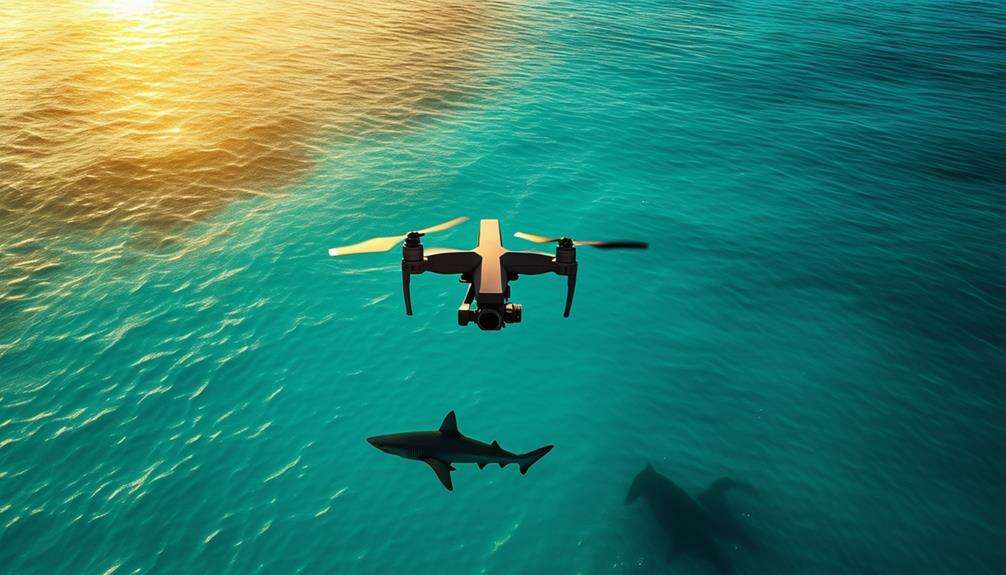
Drones are revolutionizing shark tracking along the coast by offering real-time monitoring. This cutting-edge technology enhances coastal safety through non-invasive methods. This allows beachgoers to enjoy the water with greater peace of mind.
Real-time Shark Monitoring
Drones have revolutionized shark monitoring along the coast, providing real-time tracking and enhancing beach safety. Surf Lifesaving NSW has replaced traditional shark-spotting helicopters with advanced drones, significantly boosting their surveillance capabilities. Initiated in 2020, this innovative program is a collaborative effort between Surf Lifesaving NSW and the NSW government.
Equipped with cutting-edge technology, drones can identify and track various shark species and sizes with remarkable precision. They offer valuable aerial viewpoints, enabling comprehensive ocean surveys to detect potential shark threats. Consequently, lifeguards can issue timely alerts, ensuring that beachgoers are warned well in advance of any danger.
The use of drones has transformed shark monitoring, making the process more efficient and effective. Unlike helicopters, drones are less intrusive, can cover large areas quickly, and provide constant real-time data.
This shift hasn't only improved our ability to track sharks but also enhanced beach safety measures. By employing drones, Surf Lifesaving NSW has set a new standard in coastal safety, ensuring a safer and more enjoyable experience for beach visitors.
Enhanced Coastal Safety
Shark tracking drones have significantly bolstered coastal safety by providing real-time data and early warnings to beachgoers. Imagine relaxing on the beach, confident that drones are surveying the waters, identifying shark species and sizes to ensure everyone's safety. The deployment of drones has revolutionized how we monitor these awe-inspiring yet potentially dangerous creatures.
In 2020, Surf Lifesaving NSW and the NSW government collaborated to replace traditional shark-spotting helicopters with advanced drone technology. This initiative has led to more efficient and precise tracking of sharks along the coastline. Rest assured that drones are continuously flying overhead, scanning the waters for any signs of sharks.
These drones are equipped with state-of-the-art technology that not only identifies sharks but also predicts their movements. When a shark is detected, lifeguards receive instant alerts, enabling immediate action such as closing beaches or warning swimmers. The use of drones has dramatically improved response times, significantly reducing the risk of shark encounters.
Non-invasive Tracking Methods
Advanced technology has significantly improved coastal safety and introduced non-invasive methods for tracking sharks. Surf Lifesaving NSW has transitioned from using traditional shark-spotting helicopters to drones, enhancing the way sharks are monitored along the coast. This switch, implemented in 2020, enables the precise identification of shark species and sizes without disrupting marine life. Drones survey coastal waters, providing real-time data and improving the efficiency of shark tracking operations.
Key aspects of this advanced approach include:
- Non-invasive tracking: Drones monitor sharks without physically interacting with or disturbing them.
- Improved accuracy: Advanced drone technology enables precise identification and measurement of shark species.
- Enhanced safety: Real-time data from drones strengthens coastal safety by allowing quicker responses to potential shark encounters.
- Environmental benefits: Using drones minimizes the impact on marine life and their habitats compared to traditional methods.
- Collaborative efforts: The partnership between Surf Lifesaving NSW and the NSW government showcases an effective, collaborative approach to coastal monitoring.
These advancements ensure you can feel safer and more informed about marine life, all while preserving the delicate balance of marine ecosystems.
Military Drone Shadows
Military drone shadows stretch across battlefields, silently transforming modern warfare. Initially deployed by the US military during World War I, drones have evolved to execute complex tasks once deemed impossible. Today, the US spearheads military drone development and utilization, leveraging these advanced machines for reconnaissance and combat missions.
Drones are now indispensable to modern military strategies. Equipped with sophisticated surveillance technology and precision-guided missiles, they provide real-time intelligence and can engage targets with minimal risk to human soldiers. Their extended airborne capabilities enable them to monitor vast areas and gather crucial data undetected.
These technological marvels have significantly enhanced military capabilities, allowing for operations with unprecedented efficiency. By reducing the need for manned missions, drones minimize casualties and improve strategic decision-making. Their impact is evident in various conflict zones where they continuously reshape tactics and outcomes. In essence, military drones have revolutionized warfare, enabling safer, more precise, and complex operations. Their shadows will continue to loom large over the future of combat.
Conclusion
You've just touched on the incredible world of drones. From 19th-century concepts to groundbreaking innovations, drones have transformed countless industries. Whether tracking sharks or delivering packages, the sky's the limit for what drones can achieve.
As regulations evolve and technology advances, expect even more fascinating developments. Keep an eye on the skies—exciting drone advancements are just around the corner, shaping the future in unimaginable ways.

